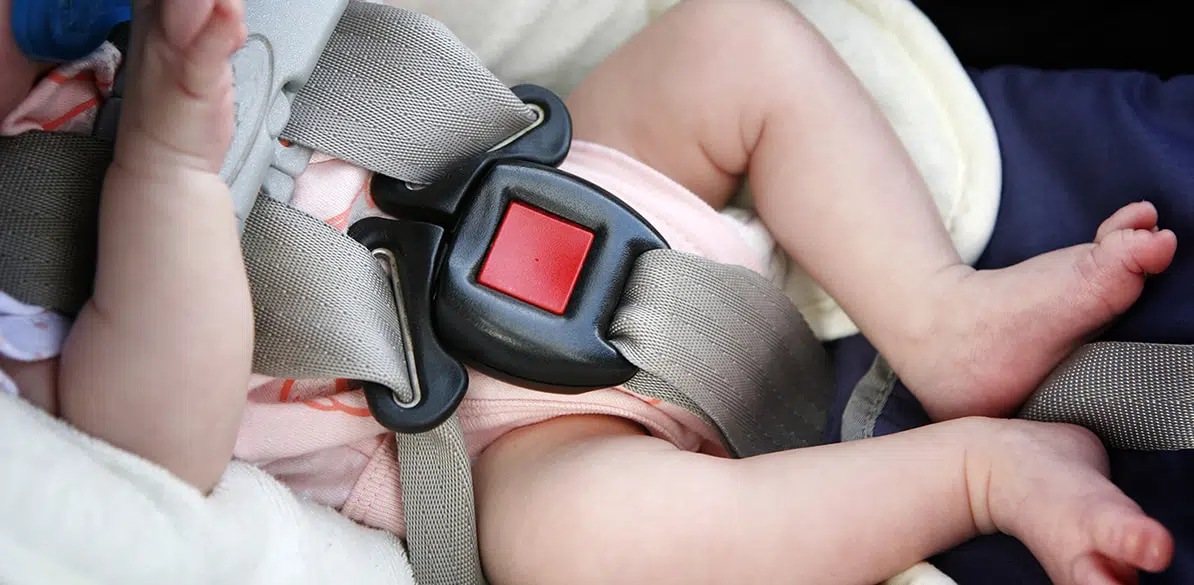How should children with hypotonia travel?

Hypotonia, or decreased muscle tone, is usually diagnosed at birth or in early childhood. One of the most evident signs is that the baby seems weak at birth and cannot keep his or her knees or elbows bent later on. Moreover, they often have problems feeding themselves or experience motor difficulties as they grow.
There are several diseases and disorders that can cause symptoms of hypotonia. The key is to identify the cause of these symptoms and thus find the best possible treatment. Causes include problems with the nervous or muscle system, an injury or disease, or an inherited disorder, but sometimes a clear cause cannot be identified.
In some cases, children are born with benign congenital hypotonia, a milder disease that can be mitigated through therapy (physical, occupational or vocal), though its limitations can last for quite a long time.
What difficulties do children with hypotonia have when travelling by car?
In general, these children usually present with flaccidity, lack of movement or reduced mobility, and weakened muscle tone. In some cases, they have limited control of their head or can find it difficult to sit up straight on their own. This affects the child’s posture and positioning in a car seat.
If you are travelling by car, the first thing you need to do is guarantee your child’s safety with an approved child restraint system suitable for their height and weight and always placed in a rear seat. In addition, “children with hypotonia have special needs, and these children should not only enjoy the same degree of safety as all other children but they should also have an additional level of safety if the severity of their hypotonia warrants it, as their bodies are more sensitive and fragile than those of children with normal muscle tone,” explains Lucía Villacieros Hernández, a paediatrician and child neurologist at the Pediatric and Neonatology Unit of the Hospital Quirónsalud San José.
For this reason, regardless of whether their medical condition is temporary or permanent, children with hypotonia should always travel in child restraint systems suited to their individual condition (e.g. with adequate support for their head by means of side cushions if they are unable to properly support their own head).
There is no specific treatment for hypotonia, “treatment will largely depend on the disease that is causing it. If the cause is known, the treatment will be targeted to the disease. Whatever the case may be, it is very important to stick to a psychomotor stimulation program, including physiotherapy and rehabilitation, always with the guidance of your neuro-paediatrician,” notes Dr Villacieros.
A rear-facing position (390 KB) is the safest for any child, but especially for children with decreased muscle tone, such as children with hypotonia. Maintaining their posture for as long as possible is also highly recommended to ensure the safety of these children.
In more serious cases of hypotonia, the child may need a wheelchair to get around as well as the assistance and support of orthopaedic devices to prevent (or correct, where applicable) injuries such as dislocated joints.
It should be borne in mind that in most cases of hypotonia, one of the biggest challenges is lifting and moving the child. This also makes it difficult when it comes to fitting the child in its CRS, which is when you need to ensure that he or she is in the right position to avoid any discomfort and, in the worst-case scenario, an injury.
As in other cases of children with special needs, the specific measures you take will depend on the specific health issue of the child and their general condition. Some children will require few changes to a normal routine, but others may even require a special child seat.
